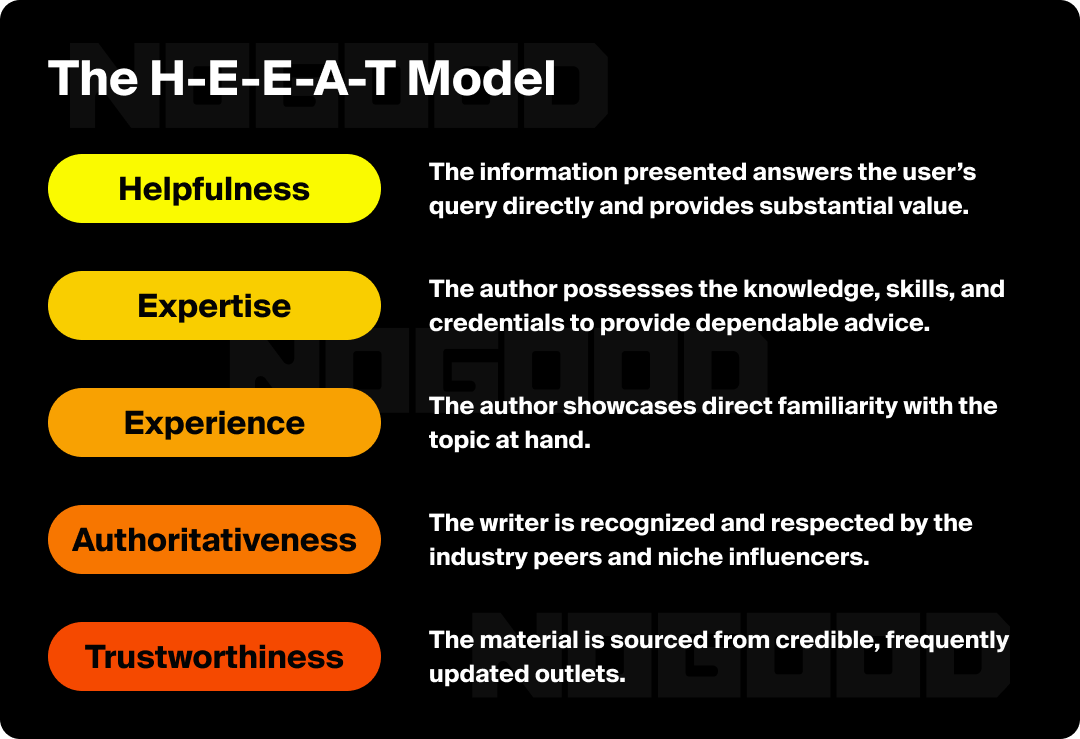Unless you’ve been living under a rock, you’ve likely seen AI-generated writing across the internet. It’s characterized by an overly polished, formal style, and fun little quirks like the overuse of em-dashes.
This is an issue for marketers. Why? Studies show that consumers find a brand that uses identifiably AI-generated content to be lazy, impersonal, untrustworthy, and uncreative. So it doesn’t matter how competent writing sounds anymore; if it’s not engaging, nobody will read it.
So let’s put to rest the panic that ripped through the industry when AI tools started emerging. AI isn’t going to replace copywriters; it’s actually a tool that can empower you as a copywriter.
Look at it this way: with AI devaluing the basic skill of writing, your expertise as a copywriter only doubles in value. AI can’t manipulate tone and style to the extent that a human can, and it surely can’t tell a story like a human, either.
So you shouldn’t be worried that AI is going to take your job, but you should be afraid of not using it, as it provides a slew of advantages that we’ll delve deeper into.
But the fact of the matter is this: You have to reclaim your role as a copywriter by transforming into what we call a prompt engineer. If you don’t, your work risks being left behind, and you do, too.
The AI Advantage: Efficiency, Scale & the 10x Marketer
The thing about AI is that you have to use it for what it’s good at, not having it generate mass amounts of content without giving it a second glance. This isn’t how you should use AI, and this is why it has the reputation it does. The true edge that AI gives your copywriting skills is this: automation, transforming you into a 10x marketer.
You may have heard of a 10x engineer: someone who takes one day to do the average equivalent of 10 days of work, simply because they are highly strategic and analytical.
We argue that AI is what makes a copywriter a 10x one. It’s not just about saving an hour; it’s about a fundamental increase in output capacity. The old workflow, where a single piece of content could take days to perfect, is obsolete.
By using AI, you can put the days of sitting in front of a blank document and waiting for inspiration to strike behind you. You can use LLMs to generate ideas, first drafts, or repurpose content for different channels. Now, you’re able to truly focus on honing your irreplaceable skills: storytelling and manipulating tone and voice like the indispensable weapons they are.
Think back to how we used to do it: launching a simple A/B test required days just to draft two distinct landing page concepts, two sets of email copy, and six social variations. Now, AI generates all those foundational options in minutes. Copywriters can spend that saved time iterating, refining the tone, and strategically connecting the content to SEO and AEO targets. But utilizing AI effectively and successfully means becoming an expert prompt engineer, so we’ll tell you which tools you should use for this (and how).
What AI Tools Should You Use for Copywriting?
When it comes to AI for copywriting, the most versatile tools you can use are large language models (LLMs). You can use them to generate content, or to refine your text to make it SEO and AEO-friendly. Instead of learning a dozen different single-purpose tools, mastering one or two core LLMs can give you a massive creative advantage.
General-Purpose LLMs
For a copywriter, the best place to start is with an all-in-one LLM like ChatGPT or Gemini. These models are like a creative blank canvas. You can use them for virtually any task, from brainstorming headlines and optimizing an entire article to drafting a sales email and editing a landing page. Their strength lies in their versatility and their ability to follow complex, multi-step instructions; the kind you’d use for prompt engineering.

Specialized AI Tools
While general-purpose LLMs are the foundation, there are also specialized tools built for copywriting, such as Jasper or Copy.ai. These tools offer a user-friendly interface and pre-built templates for common copy tasks. They can be great for a fast start, especially for a beginner, but they may limit your ability to craft truly unique and original prompts.
The one specialized AI tool we do recommend using for copy specifically is Grammarly. After you’ve crafted your content with an LLM like ChatGPT, Gemini, or Claude, and reviewed and edited it on your own, you can plug it into Grammarly to make sure your content is free of any spelling, grammar, or syntax errors.
Of course, we can’t have a conversation about marketing copywriting without mentioning optimization. You can also consider using a specialized AI tool for SEO and AEO purposes:
- For SEO, we highly recommend Frase.io, which analyzes top search results to automatically generate content briefs, complete with outlines, key topics, and questions your audience is asking. It can even tell you how often you should be using certain keywords as you write, making it a great tool for copywriters.
- For AEO, the best tool you can use right now is Goodie. While Goodie’s main purpose is to help you track your brand visibility in LLMs, it also has a content writer tool built into it that can generate AEO-friendly content, ensuring you capture visibility in AI.

What to Look For in an LLM Tool
No matter which tool you choose, the most important factor is its ability to follow your creative direction. When exploring options, look for capabilities that align with a copywriter’s strategic role:
- Persona Customization: Can you provide a detailed persona for the AI to adopt, or a specific audience for it to write for?
- Tone & Voice Control: Does the tool let you fine-tune the tone (e.g., professional, witty, empathetic)?
- Content Repurposing: Can it take a long-form article and generate a series of social media posts, email snippets, and ad copy from it?
While specialized tools can be a good start, to be an effective prompt engineer, you should be using an LLM with which you can have a back-and-forth conversation.
Reclaiming Your Copywriting Expertise
So now that we told you what AI can do, you have to remember that there’s a lot that it can’t do. While we touched on it before, we’re gonna dive a little deeper into how you can successfully reclaim your copywriting expertise, with good copywriting becoming more valuable than ever.
Voice, Strategy, & Storytelling
There’s no question that AI knows how to write, which is why everyone was so scared when it first emerged. AI knows grammar, punctuation, spelling, and even style, but it doesn’t have personality, like you do.
So, even though the basic mechanics of writing have become a less valuable skill with AI being able to generate content, your ability to tell a story and genuinely connect with audiences has only become more valuable in response. It can’t imbue writing with the emotional depth a human can, especially not one of a skilled copywriter.
Guiding AI for SEO & AI Visibility (AEO)
You should also keep in mind that Google penalizes AI content (or any content, for that matter) that is used to “manipulate search rankings.” A bit vague, right? (Especially as manipulating search rankings is the entire point of SEO).
But the point that Google is making is that you should prioritize writing H-E-E-A-T content, as that is what Google will prioritize when its algorithm ranks webpages. This means that if you do use AI, really flex your copywriting skills to make sure your content is salient and truly helpful, not slop meant to satisfy search engines solely.

Your content should go beyond the basics: it should be engaging, even fun to read. This means that you’re now empowered by taking risks, using your voice in a unique way, and making funny quips here and there. This not only makes it better for users to read through, but it’s also more likely that your content will populate in the SERP and AI, as user engagement metrics (aka, long engaged sessions) influence visibility.
Your humanity also means that you’re mitigating the risk of accidentally publishing hallucinations, which can be a dealbreaker for your brand. This means doing proper research and always double-triple checking any content you generate with AI for accuracy.
But to help you even further with using AI for SEO and AEO specifically, we’re gonna break down some specific strategies for you.
Using AI for SEO
For years, SEO has been about getting your content to rank highly on a SERP. Even though LLMs are growing in popularity as a search engine, good SEO is the foundation of AEO. This means building authority, utilizing a scannable structure, and creating truly helpful content. All of these things help your SEO efforts, not undermine them.
Here’s how you can use AI for SEO:
- Smarter Keyword Research: While you may think of using AI for individual keyword research, we recommend leaving that to Ahrefs. However, you can use AI to identify and group related concepts and keywords, a process known as topic clustering. This helps you build a comprehensive web of content that covers an entire subject area, satisfying readers’ needs and signaling to search engines that you’re authoritative.
- Content Outlines & Optimization: AI can generate comprehensive content outlines and briefs, and it can also help you create meta descriptions, title tags, and schema, the technical components that make your content understandable to search engines.
- Competitive Analysis: LLMs can analyze top-ranking pages, giving you insights into your competitors’ strategies, content structure, and potential content gaps without you having to pore through pages and pages of content.

Using AI for AEO
Now, AEO is about getting your content cited within LLMs and AI-powered SERP features (like Google AI Overview). You can use AI to build upon your SEO efforts and optimize your content for AI by doing the following:
- Targeting Conversational Queries: You can use LLMs to find the natural language questions your audience is asking. By identifying these questions and long-tail queries, you can create content that provides direct answers.
- Crafting Content: You can prompt an LLM to write answers that are perfect for Featured Snippets and AI Overviews, like clear, scannable formats (short paragraphs, lists, and FAQs). This type of content is exactly what AI systems are designed to scrape and surface.
- Repurposing & Scaling Content: You can use your prompt engineering skills to turn a single blog post into dozens of AEO assets. For example, you can take a long-form article and generate an FAQ section, a list of key takeaways, a series of social media posts, or concise answers for voice search, all optimized for different platforms.

AI as an Extension of You
This is how we see it: AI is less of your creative partner and more of an extension of you. We know this sounds a bit intense, but there’s a reason why we’re saying this.
The average writer will use AI improperly, prompting it to generate ungodly amounts of unreadable slop, but as you know now, that’s not the approach you should be taking. You need to be better than that in order to truly stand out, and here’s how:
The Input-Output Mandate
You’ve probably heard people say this before, but we’re gonna reiterate how important it is: AI’s output is only as good as its input. Since you already have a strong command and understanding of language as a copywriter, you should already have the ability to communicate exactly what you want.
For example, you wouldn’t tell AI: “Write me copy for an ad for a new hairdryer.” You’d be highly specific, probably writing something like:
“Act as a professional direct-response copywriter for a premium beauty brand whose target audience is busy professional women aged 30-45. Write five distinct, benefit-driven Facebook ad headlines (under 12 words) that emphasize ‘speed, silence, and shine.’ The tone must be aspirational yet urgent. Use data from our competitor analysis: specifically, mention the drying time is 45% faster than standard models, and incorporate a soft scarcity trigger (e.g., ‘limited stock’).”
The Skill Shift
By doing this, going back and forth, and then inputting your revised and final copies into the LLM, you’re training AI to sound like you, forcing it to refine how it answers your prompts. This means that each time you use AI, in theory, it should produce even better results as they’re increasingly personalized. This is what we mean by referring to AI as an extension of you: it transforms into a tool that learns your unique expertise, strategy, and brand voice, evolving from simply generating generic content into something more elevated.
This means that your skills have shifted from being a writer to more of an editor and refiner. Your skill isn’t necessary in generating words anymore, but rather in taking what AI has given to you based on your highly specific prompts and only making it better. This is what makes you an expert prompt engineer, giving you a competitive edge over your colleagues who refuse to get with the times.
The Future of Copywriting Is in Your Hands
We started this conversation under the shadow of a terrifying question: Will AI replace copywriters? We’ve established the definitive answer: No, but copywriters who don’t use AI will be replaced by those who do.
AI didn’t take our jobs; it took the most basic parts of our jobs, the ability to put words on paper, freeing us to reclaim our true professional power. With AI, copywriters have the potential to become a 10x marketer, capable of achieving scaled output while ensuring content is authentic and relevant.
If you are still on the sidelines, waiting for this trend to pass, I’m begging you to listen now. Your ability to wield AI is becoming the single most defining factor in your professional relevance at this point in time. By becoming the prompt engineer that’s within you as a copywriter, you’re not just securing your place in the industry, but showing clients and employers that you’re the most experienced person for the job. There’s no way around it: The future of copywriting belongs to those using AI. Get with it, or get out.






